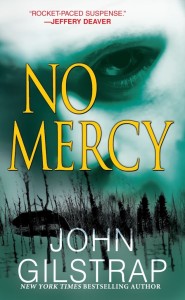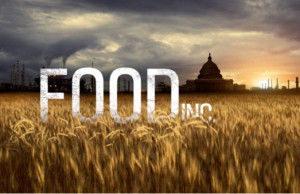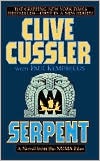Our guest today is best-selling author Robert Liparulo, a former journalist with over a thousand articles and multiple writing awards to his name. His novels include COMES A HORSEMAN, GERM, DEADFALL, and this year’s DEADLOCK, as well as the young adult series, DREAMHOUSE KINGS (the latest of which is TIMESCAPE, releases July 7). He is currently writing, simultaneously, an original screenplay and novel, with the director Andrew Davis (THE FUGITIVE, THE GUARDIAN).
By Robert Liparulo
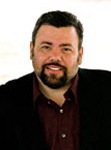 Pace. Rhythm. Tension. It’s no coincidence these terms describe both stories and music. In fact, for me, music has always helped me create stories. When someone mentions a favorite scene from one of my novels, more often than not, I immediately remember the music that was playing in my headphones when I wrote it: Olaf’s attack on Brady and his son in Comes a Horseman (“Elk Hunt” from Last of the Mohicans); Stephen’s confrontation with the killer Atropos in Germ (“The Battle” from Gladiator); Hutch’s apprehensive readiness to rise from charred ground and fight at the end of Deadfall (“Death is the Road to Awe” from The Fountain). Music gets me in the mind-set to write specific scenes—its rhythm reminds me of the pace I’m looking for as I work to find just the right words; its mood holds me in a sort of suspended animation within the scene, regardless of outside distractions or the time it takes to write it.
Pace. Rhythm. Tension. It’s no coincidence these terms describe both stories and music. In fact, for me, music has always helped me create stories. When someone mentions a favorite scene from one of my novels, more often than not, I immediately remember the music that was playing in my headphones when I wrote it: Olaf’s attack on Brady and his son in Comes a Horseman (“Elk Hunt” from Last of the Mohicans); Stephen’s confrontation with the killer Atropos in Germ (“The Battle” from Gladiator); Hutch’s apprehensive readiness to rise from charred ground and fight at the end of Deadfall (“Death is the Road to Awe” from The Fountain). Music gets me in the mind-set to write specific scenes—its rhythm reminds me of the pace I’m looking for as I work to find just the right words; its mood holds me in a sort of suspended animation within the scene, regardless of outside distractions or the time it takes to write it.
Years ago, as movie critic, I’d sometimes see films before they were finished, without a musical score. At one screening, the director stood in the aisle humming the music that would accompany each scene. That was more distracting than the film’s symphonic nakedness, but I understood the poor man’s panic over having his film seen that way: music can make or break a movie. It not only adds a rich layer of enjoyment to the viewing experience, it cues the audience to the filmmaker’s intentions—“OK, time to get scared” or “In case this guy’s mask made out of human skin isn’t enough to let you know, he’s the bad guy!” That’s why the tracks of musical score are called “cues.”
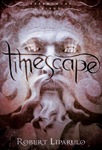 (I’ve dreamed of including a playlist—even the actual music in digital form—with my novels. Readers could then start a soundtrack with each chapter, heightening their experience of the story. Of course, individual reading speeds make that impractical; few things are worse than out-of-synch audio tracks. And, yes, I realize it’s part of the author’s job to create the same emotional response in readers that music does, using only words. Still, I sometimes imagine myself acting like that director: leaning over a reader’s shoulder, and at the right moment going, “Da-da-da!”)
(I’ve dreamed of including a playlist—even the actual music in digital form—with my novels. Readers could then start a soundtrack with each chapter, heightening their experience of the story. Of course, individual reading speeds make that impractical; few things are worse than out-of-synch audio tracks. And, yes, I realize it’s part of the author’s job to create the same emotional response in readers that music does, using only words. Still, I sometimes imagine myself acting like that director: leaning over a reader’s shoulder, and at the right moment going, “Da-da-da!”)
It’s hard for me to experience a story, in any medium, without musical accompaniment—whether in my ears or my head.
For as long as I can remember, I’ve listened to music as I wrote—through years of writing magazine articles and intermittent screenplays. It started as a way of deadening the sounds of screaming kids, vacuum cleaners, and when I rented an outside office, the shouts coming from the divorce attorney’s office next door. Then I started writing novels, and the type of music I played suddenly mattered.
Faster tempos do help keep the pace up—if not within the story, then at least with how fast my fingers move over a keyboard; but then, volume helps with that as well. The louder, the better. More important than tempo is how a piece of music makes me feel. A cue that starts off slow and builds to a triumphant crescendo can carry me through a fast-paced action sequence as well as any nonstop, staccato rhythm. “Chevaliers de Sangreal” from The Da Vinci Code, for example: a hero’s theme if ever there was one.
Over time, I’ve built a library of music categorized by the mood it puts me in when I write. Take, for instance, Clint Mansell’s haunting music for Requiem for a Dream. Its cues seem to be teetering on the edge of something, without relief or execution. No wonder several of the titles have the word “Tense” in them. When I launch into a suspenseful scene, I’ll often queue up my Requiem playlist.
Here’s a specific example of a partial scene and the music I was listening to when I wrote it:
“With the speed and fluidity he had practiced a thousand times, Hutch drew back on the bowstring and released it, all in one, smooth two-second motion. He held still for another beat to make sure the arrow cleared the bow. Then he dropped his right arm to a second arrow rising from the ground beside him. His bow arm never moved. His head never moved. His eyes never came off of Bad. As the arrow sliced a groove through Bad’s skin at the temple, Hutch was already nocking the next arrow.”
Most likely, Quentin Tarantino would go with something fast and exotic, like NEU!’s “Super 16” from Kill Bill. Because the scene is a mix of suspense and action, I powered up “Betrayal” from Enemy at the Gates—from the scene in which they discover a young boy murdered and hanging from a crane. It’s emotive and heart-wrenching, and prior to the “discovery” almost painful in its anticipation.
My writing-music of choice is almost always film scores. It seems to me that movie moguls are the benefactors of today’s great composers, Hollywood the new Vienna. I also like that the structure of a good story—with its cycle of tension and relief, despair and triumph—forces a wide variation in music within one recording. I used to think the strong bond between a movie’s images and its music would cause me to think only of those images while listening to the score—Russell Crowe plucking his violin in Master and Commander. However, I’ve found that the spirit of the music takes over and I can claim it for my own. That’s why filmmakers often listen to other movies’ scores while on set. They’re not trying to imitate another movie’s scene; they’re letting the music help them get in the mood for their own scene. The director Ridley Scott is known for doing this.
Thankfully, most movie scores don’t have lyrics. I’m too much of a word geek to write with lyrics pounding into my eardrums: I’m always trying to listen to them. Every now and then, however, a song with lyrics is perfect for getting me into the groove of a scene (though usually it’s something in its rhythm, tempo or melody, rarely its words that attracts me to it). When that happens, I play it over and over until my mind stops 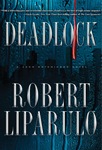 trying to catch every word and hears the vocals as it does any other instrument. Felix da Housecat’s remix of Nina Simone’s “Sinnerman” comes to mind; I listened to it while writing the scene that introduced Brendan Page, my latest novel Deadlock’s villain, a true sinnerman with a penchant for “cool,” which the song captures.
trying to catch every word and hears the vocals as it does any other instrument. Felix da Housecat’s remix of Nina Simone’s “Sinnerman” comes to mind; I listened to it while writing the scene that introduced Brendan Page, my latest novel Deadlock’s villain, a true sinnerman with a penchant for “cool,” which the song captures.
It’s all about what works for the individual writer. When writing action scenes, Meg Gardiner (The Memory Collector) says Gladiator, The Day After Tomorrow, Jarhead and 300 “get me in a fightin’ mood.” David Dun says he listened to “the womb-like sounds of a whirlpool hot tub with all the jets running” while writing The Black Silent. Whatever works.
When I write to music, it does more than nudged me into a specific pace or help me with atmosphere. It reminds me of quality, that musical notes, played on varied instruments in a specific order and speed can touch people in ways that are mysterious and wonderful. It can lift heavy spirits and wring tears from long-dry eyes. It can unsettle sad memories and tickle a laugh out of you when you need it most. It stirs the listener and paints unimaginably vivid pictures—exactly the things I want my words to do, as well.
Do you listen to music while you write? What are your favorite tunes?
~~~~~~~~~~~~~
Watch for Sunday guest blogs from Julie Kramer, Anne Hawkins, and Grant Blackwood. And coming July 26. James Scott Bell joins the Kill Zone as our new fulltime Sunday blogger.






